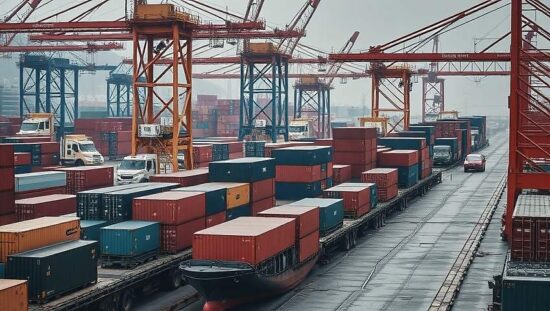China’s Rise and the Shift in Global Manufacturing
China is no longer the world’s workshop as western companies sought to have it stamped in the 1980s when they started outsourcing production to the country. The Chinese government insisted on technology transfer as a prerequisite for market access. The Chinese learned quickly and worked tirelessly. They wanted to break free from poverty and backwardness and live like people in developed countries.
Soon, more and more products were coming from China onto the western markets. Initially, these were pre-products such as steel for further processing in the West. But not only did production volumes grow, so did the capabilities of Chinese workers. They not only learned modern techniques in factories of western companies, they also studied at universities in the West. Many stayed there, while the returnees helped to raise the quality and research level of Chinese products.
The number of products made solely in China grew, initially on the Chinese market, but increasingly aimed at the world market, where the profits were higher. At first, Chinese products were not competitive in quality and design on the western markets, although they were very cheap. Chinese cars were ridiculed and often did not receive road approval in the West due to lack of safety. On the markets of the third world, the situation was different, where price was the main deciding factor.
Nevertheless, Chinese production increasingly broke free from dependence on western companies. Today, the development has progressed to the point where Chinese cars are no longer ridiculed but have become a serious competitor and are leading worldwide in the field of electric mobility. In an article in the Frankfurter Allgemeine Zeitung about the Hungarian auto industry, the difference is made clear: “In the battery industry, the Chinese brought in many experts that Hungary simply doesn’t have.”
Besides diligence and willingness to learn, the soberness and realism of political leadership were crucial to China’s rise. Unlike the West, the Chinese did not overestimate themselves. They had a healthy relationship with their own capabilities and weaknesses and above all, they were open to pragmatic solutions. Instead of pressuring the US to invest in technology leadership like Donald Trump with extortion or Joe Biden with massive financial expenditure, the Chinese focused on simpler solutions that could be implemented with their own resources.
At the beginning of economic openness, joint ventures with western companies were sought for technology acquisition, but with increasing state revenues, the Chinese began to acquire western technology through the purchase of companies. The first big coup was the 2001 takeover of the German magnetic levitation system Transrapid for 1.3 billion DM, laying the foundation for the rise of Chinese railway technology to world leadership.
Especially after the great economic crisis of 2008/09, the Chinese went on an acquisition spree. To catch up with technology and design in the automotive industry, they acquired companies in the West that had a technological advantage over their own, such as Volvo, Lotus, MG and others. But also in other industrial sectors, the country aimed for world leadership. “Two decades ago, shipbuilding in China was a sideshow. Today, the People’s Republic dominates world production. China produces more than 50% of all ship tonnage in the world.”
To enter the business of liquefied gas carriers, which China could not yet build, the Chinese conglomerate Hengli acquired in 2022 the bankrupt shipyard of the South Korean manufacturer STX for a fraction of the cost, along with a complete production line. In 2001, the political leadership of the People’s Republic declared world leadership in shipbuilding a strategic goal and two decades later, it has become a reality. The state revenues of the Chinese allowed such projects and goals to be financed.
Such a volume of shipbuilding capacity also has military-strategic implications. While Chinese warships may still be inferior to those of the US in some areas, their shipyard capacities are not sufficient to withstand a conflict at sea or even to supply thousands of kilometers. “China now owns more warships than any other country” and given the shipyard capacities, it can quickly compensate for losses. “China’s industry has a 230-fold advantage in shipbuilding capacity over the US.” However, there are not enough qualified personnel with the corresponding qualifications.
The last major acquisition of a western technology company by the Chinese was the purchase of the leading robotics manufacturer Kuka. After that, western governments made it more difficult to sell such acquisitions to China, or even banned them with the reference to national security. They had realized that such acquisitions closed the technological gap between the West and China more





